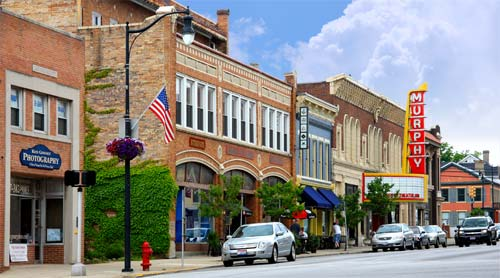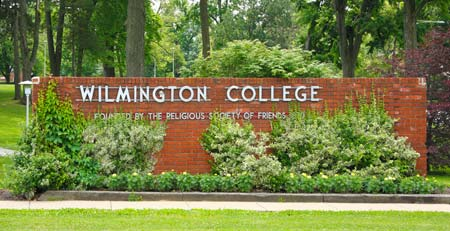
Wilmington
The first settlers arriving in the area came mostly from North Carolina. In 1810, the relocating settlers decided to name their community after their hometown back in North Carolina. Some might wonder why a group of people would move almost 700 miles and then give the new community the same name? The answer lies in the reason for the move, and in the direction the new community would take over the next 200 years.
Long before slavery was abolished, there were groups of American's who detested the practice, even those living in the south where slavery had long been established. One group known as the Society of Friends (commonly known as Quakers) lived in North Carolina. In the later half of the 18th century, they became outspoken opponents of slavery. Although the Quakers of North Carolina had at one time held considerable political power, that power waned as their belief in non-violence angered those that had fought and died for freedom. Combining this loss of political power and their open anti-slavery positions, made the Ohio territory an attractive option.
Once the Friends arrived in Ohio, they openly spread their anti-slavery opinions. They also expanded the Underground Railroad that helped former slaves pass through southern Ohio, much of which openly supported the south's position on slavery.

Wilmington College
Wilmington College had its beginnings when the Society of Friends purchased a building originally intended for Franklin College, but was never completed. The Society of Friends converted the building and created Wilmington College in 1870, with the first classes held in 1871. Although originally created to educate Quakers, today, the college accepts students from all religious backgrounds.
Hazard Arboretum
Hazard Arboretum is a 13.43 acre planting containing more than 230 species of woody plants, shrubs, and trees. It honors Dr. Frank O. Hazard, class of 1927, a biology professor at Wilmington College from 1928 to 1962. Adjacent to the arboretum is a 14-acre natural area.
Ernest R. Hazard owned a restaurant in Wilmington, and was for many years credited with creating the first banana split. According to the legend, Ernest wanted to attract more college students to his restaurant and he created a competition to invent a new treat. The winning entry featured a banana split into 2 halves. On top of that there were 3 scoops of ice cream, covered with variety of toppings.
Today, Hazard's creation is honored at Wilmington's annual Banana Split Festival.
Wilmington's Banana Split Festival is usually held the 2nd weekend of June each year.

Clinton County Courthouse
Clinton County
Wilmington is the county seat for Clinton County. Despite some speculation that the county was re-named for a recent American president, it was name for an early American vice-president: George Clinton, who was James Madison's vice-president. It was the efforts of George Clinton and his nephew, DeWitt Clinton, who pushed the federal government to build the Erie Canal, which in turn made it possible for Ohio to build her early canals.
The Murphy Theatre
Any fan of the Chicago Cubs will recognize the name Charles Webb Murphy. Murphy was the owner of the Chicago Cubs when they won the World Series (in fact, the only time they ever won a World Series) in 1907 and 1908. Murphy grew up in Wilmington and after selling the Cubs in 1913, he returned to Wilmington and built the Murphy Theatre which first opened in 1918. The Murphy is still in operation today.

In 1993 a film adaptation of "Lost in Yonkers" was made staring Richard Dreyfuss and in one scene the Murphy Theatre can be seen in the background.



